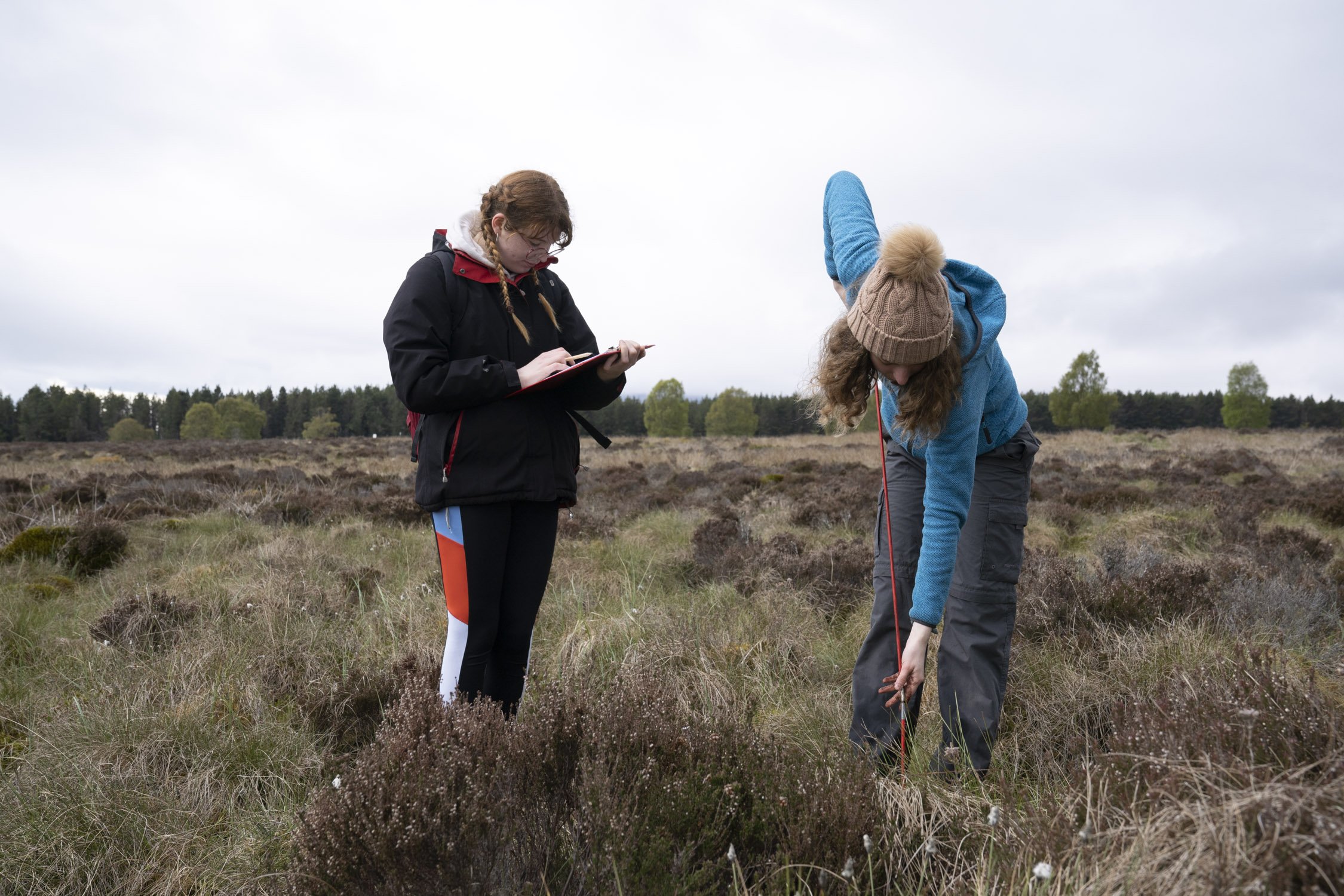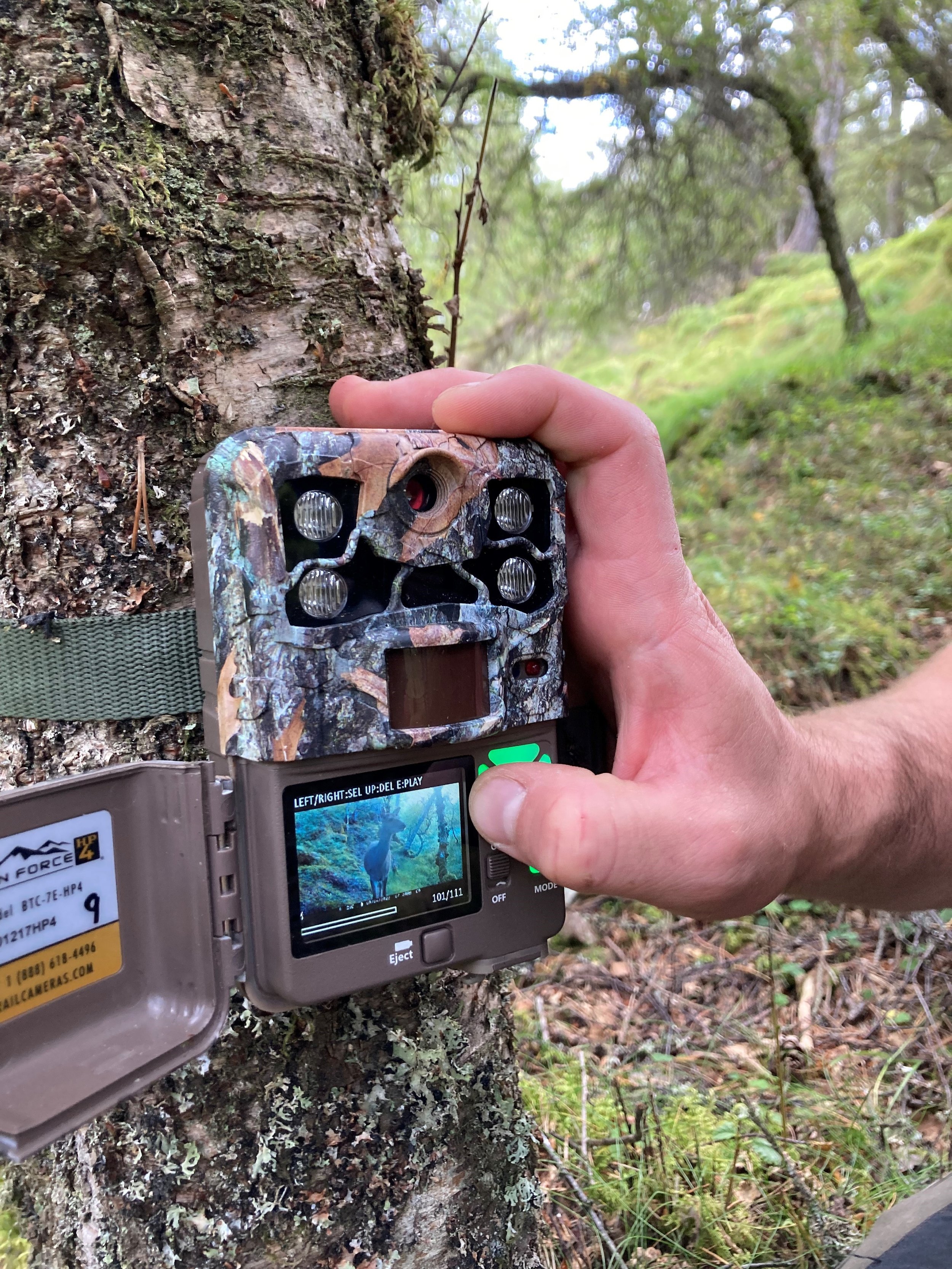We are developing nature-based solutions that are robust, future-proof and scalable, which have benefits for climate, biodiversity and people. The carbon and biodiversity effects of rewilding are not fully understood and so we are developing cutting edge nature-based solutions research across our rewilding projects. We aim to demonstrate how natural capital can be grown verifiably for planet, people and profit both in wild and actively managed land.
We also are developing our data acquisition & analysis services offering for other natural capital projects and landowners.
Baselining Biodiversity
To monitor change in biodiversity, we need to establish the best metrics to use. Our baselining surveys include a variety of methods across our rewilding sites, from which we will develop standardised monitoring protocols that can be repeated on a regular basis. With this we will be able to reliably quantify biodiversity change (along with carbon fluxes) as the land rewilds.
Below are just some of the ways we are measuring biodiversity, while forecasting and tracking change over time. We use multiple methods so that we can compare results and find the most effective and robust approaches. More details about each element can be found within the Natural Capital Reports:
Habitats
Habitat classifications are mapped out by using high resolution satellite imagery paired with ground-truthing by experts.
Plant diversity
Full botanical surveys are carried out to gain a full species list of vascular plants and bryophytes, alongside structural features such as sward height and percentage of bare ground.
Camera traps
We set up motion-triggered camera traps which record the movements of passing animals. Across both Bunloit and Beldorney, the most frequently spotted animals are Roe deer and Red deer.
Birds
Our rangers walk set transects through summer (for breeding bird surveys) and winter, recording what they see and hear. We also use acoustic devices and AI to identify species from their calls.
Reptiles and amphibians
Artificial refugia are set up along transects and the reptiles and amphibians found are recorded.
Butterflies
Butterfly transects are walked during the summer recording the species and numbers seen.
Terrestrial invertebrates
We use malaise traps for flying insects and pitfall traps for ground-dwelling invertebrates and send the catch for DNA metabarcoding to identify the species present.
Soil biodiversity
DNA metabarcoding is carried out for soil invertebrates and fungi, alongside investigating soil macroinvertebrates including worms.
Aquatic invertebrates & vertebrates
eDNA analysis of water samples from rivers, lochs, burns, ditches and wetlands provides information on the aquatic invertebrates and vertebrates present.
Our Natural Capital Reports
We aim to make our research and data fully open and publish annual natural capital reports to summarise ongoing work in our rewilding projects. The first report was launched at COP 26 in Glasgow and described our research into biodiversity and carbon baselining on Bunloit estate. The second focussed on Beldorney estate’s baselining in 2022. Our third natural capital report - Building Natural Capital - was published at COP 28 in December 2022 and provides insight into natural capital developments across our three open-air laboratories, our pioneering model and the quickly developing natural capital landscape.
As this work progresses, we will record and publish our findings to ensure that Scotland can benefit from robust nature-based solutions as quickly as possible. We aim to help drive the development of high-quality and consistent monitoring of biodiversity and carbon, therefore stimulating investment in nature-based solutions.
-

Learn more about our research strategy and how we are using our open air natural capital laboratories to measure biodiversity uplift and carbon sequestration.
-

From camera trapping mammals to surveying lichens, drone surveys to e-DNA sampling. Learn more about our collaborators and their work.
-

Interested in rewilding? See how you can get involved by contributing to our research through volunteering and citizen science.












